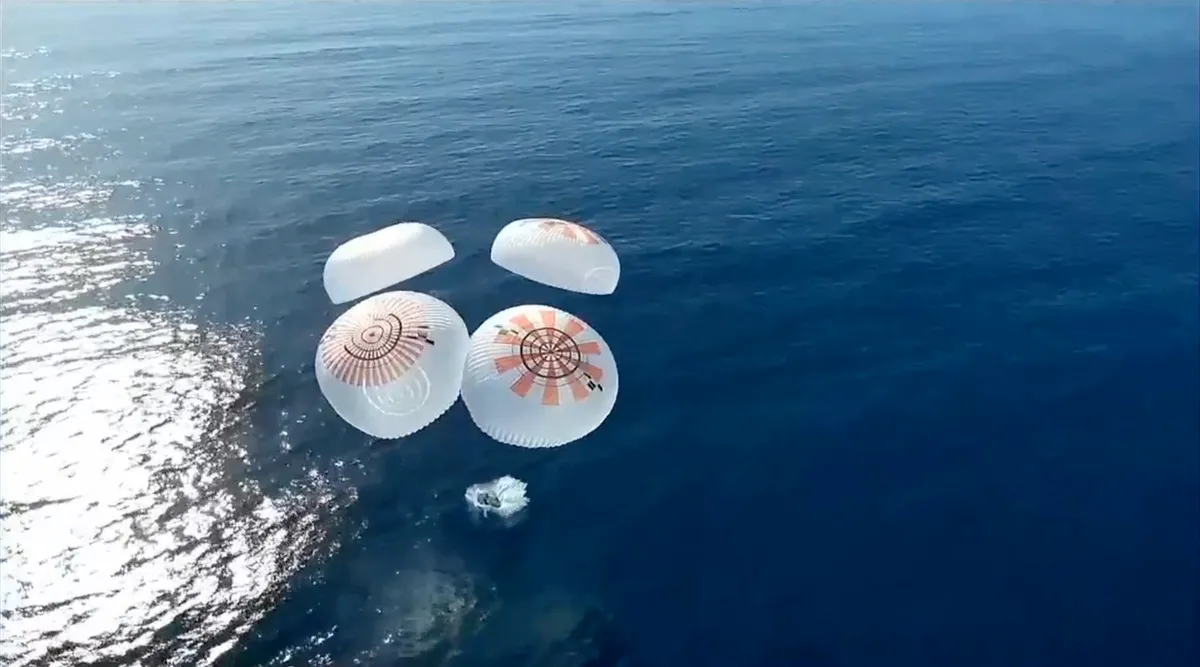In a milestone moment for commercial spaceflight, SpaceX’s Crew Dragon capsule “Resilience” safely returned to Earth on Friday, marking the conclusion of the first-ever crewed mission to orbit Earth’s poles. The Fram2 mission, led by cryptocurrency billionaire Chun Wang, splashed down in the Pacific Ocean off the coast of Southern California at approximately 12:19 p.m. ET.
This mission was notable not only for its orbital trajectory—completing 55 passes over both the North and South Poles—but also for being the first SpaceX crewed splashdown in the Pacific Ocean. The shift to the West Coast for recovery operations is part of SpaceX’s strategic decision to reduce the risk of debris falling in populated areas.
A Modern Mission With Historical Inspiration
The name “Fram2” pays homage to the legendary Norwegian vessel Fram, which was used in Arctic and Antarctic exploration in the late 19th and early 20th centuries. In a symbolic tribute, the crew carried a small piece of the Fram’s original deck on board the spacecraft during their mission.
Cutting-Edge Science in Microgravity
Over the course of their three-and-a-half-day journey, the team of four private astronauts conducted 22 scientific experiments in orbit. Their research spanned a variety of fields, including medical imaging, biology, and fitness in microgravity. Among the standout achievements was capturing the first-ever X-ray in space—an important step forward in space medicine.
Other experiments included filming the Earth’s auroras from orbit, growing oyster mushrooms in zero gravity, and evaluating compact exercise equipment designed for future use in smaller spacecraft environments.
Successful Reentry and Recovery
The journey back to Earth began when the Crew Dragon Resilience fired its deorbit burn at 11:26 a.m. ET. Reentry subjected the spacecraft to intense conditions, with heat shield temperatures soaring to approximately 3,500 degrees Fahrenheit. Despite the extreme environment, the capsule executed a textbook landing, slowing to 16 mph before deploying its parachutes and landing gently in the Pacific.
With their feet back on solid ground, the astronauts will now undergo a series of post-mission medical evaluations. These assessments are expected to provide valuable insights into the effects of polar orbital travel on the human body and help shape protocols for future long-duration missions.
A Giant Leap for Private Space Exploration
The Fram2 mission represents a significant advancement in the capabilities of private spaceflight. By pushing the boundaries of commercial missions beyond traditional equatorial orbits, it sets a new precedent for scientific research, international collaboration, and exploration potential in polar regions of Earth’s orbit.
As more private entities enter the space industry, missions like Fram2 pave the way for innovative approaches to scientific discovery and human space travel—heralding a new era in how we explore the final frontier.







Comments